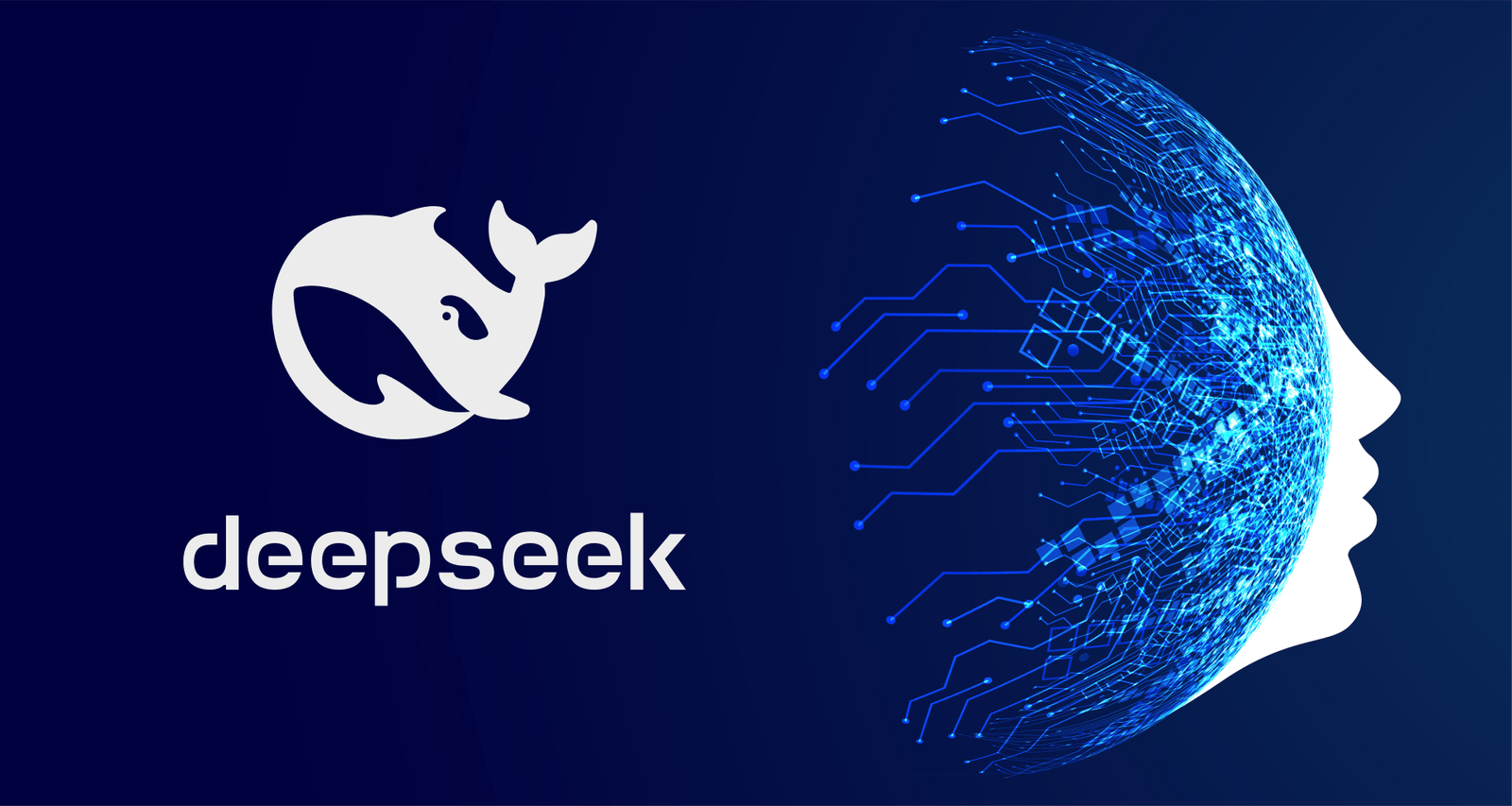
Artificial Intelligence (AI) has revolutionized the way we live and work, but it’s not without its challenges. Enter DeepSeek, a groundbreaking approach to AI that addresses some of the most pressing issues in the industry today. In this blog post, we’ll break down what DeepSeek is, the problems it solves, and how it compares to current AI systems like ChatGPT. Let’s dive in!
What is DeepSeek?
DeepSeek is an innovative AI framework designed to make AI systems more efficient, cost-effective, and scalable. Unlike traditional AI models that use their entire computational power for every task, DeepSeek introduces a smarter way to allocate resources.
Think of it as a “smart assistant” that knows when to go all-in and when to take a step back, saving time, energy, and money. However, smart assistant can make mistakes and could be biased sometimes.
Key Features of DeepSeek:
- Resource Optimization: DeepSeek dynamically allocates computational power based on the complexity of the task.
- Cost Efficiency: By reducing unnecessary computations, it lowers operational costs.
- Scalability: It can handle a wide range of tasks, from simple to complex, without breaking a sweat.
The Problem DeepSeek Solved
In the world of AI, one of the biggest challenges is resource inefficiency. Traditional AI models, like ChatGPT, are designed to use their full computational power for every task, no matter how simple or complex. While this ensures high accuracy, it’s like using a sledgehammer to crack a nut—overkill for smaller tasks and unnecessarily expensive.
The Inefficiency of Traditional AI
Let’s break it down with an analogy:
- Imagine you’re running a factory where every worker is involved in every single task, regardless of its size or importance.
- Need to assemble a car? All 1,000 workers are on it.
- Need to tighten a single bolt? All 1,000 workers still show up.
This is how traditional AI models operate. They use their entire neural network for every query, whether it’s answering a simple question like “What’s the weather today?” or solving a complex problem like writing a research paper.
The Consequences:
- High Costs: Running full-scale computations for every task drives up operational expenses.
- Slower Performance: Simple tasks take longer because the system is over-processing.
- Energy Waste: Excessive computational power leads to higher energy consumption, which isn’t eco-friendly.
How DeepSeek Fixes This
DeepSeek introduces a smarter, task-aware approach. Instead of using its full power for every task, it evaluates the complexity of the problem and allocates only the necessary resources.
- Simple Tasks: For straightforward queries, DeepSeek uses minimal computational power, ensuring quick and cost-effective responses.
- Complex Tasks: For more demanding problems, it ramps up resources to deliver accurate and detailed results.
This approach not only saves time and money but also makes AI systems more scalable and sustainable.
How DeepSeek Compares to Current AI Systems
Let’s compare DeepSeek with traditional AI models like ChatGPT to see how it stands out:
1. Resource Usage
- ChatGPT: Uses its entire neural network for every task, whether it’s answering a simple question or solving a complex problem.
- DeepSeek: Allocates resources based on task complexity, ensuring optimal usage.
2. Cost Efficiency
- ChatGPT: High operational costs due to constant full-scale computations.
- DeepSeek: Reduces costs by minimizing unnecessary computations.
3. Scalability
- ChatGPT: Struggles with scalability as every task demands full attention.
- DeepSeek: Easily scales to handle multiple tasks simultaneously without compromising efficiency.
4. Speed
- ChatGPT: Can be slower for simple tasks due to over-processing.
- DeepSeek: Faster response times for simple tasks by using only the required resources.
Real-World Examples
Let’s look at some real-world scenarios to understand DeepSeek’s impact:
Example 1: Customer Support
- Traditional AI: A customer asks, “What’s your return policy?” The AI uses its full computational power to generate a response, which is overkill for such a simple query.
- DeepSeek: Recognizes the query as low-complexity and uses minimal resources to provide a quick and accurate response.
Example 2: Data Analysis
- Traditional AI: Analyzing a massive dataset requires the AI to use its full capacity, which is time-consuming and expensive.
- DeepSeek: Allocates maximum resources for this high-complexity task, ensuring fast and accurate results without wasting energy on simpler tasks.
Why DeepSeek Matters
DeepSeek is a game-changer in the AI industry because it addresses two critical challenges: efficiency and cost. By optimizing resource allocation, it makes AI systems more accessible and sustainable for businesses of all sizes.
Benefits of DeepSeek:
- Lower Costs: Businesses can save on computational expenses.
- Faster Results: Simple tasks are handled quickly, improving user experience.
- Eco-Friendly: Reduced energy consumption makes it a greener AI solution.
- Scalable Solutions: Ideal for businesses looking to grow without skyrocketing AI costs.
Trade-offs and Disadvantages of DeepSeek
While DeepSeek introduces a smarter approach to AI efficiency, it’s not without its limitations. Like any technology, there are trade-offs that businesses and developers should consider before adopting it.
1. Potential Accuracy Trade-offs
One of the biggest advantages of traditional AI models like ChatGPT is their ability to leverage the full neural network for every task, ensuring high accuracy and depth. With DeepSeek’s resource allocation approach, there’s a possibility that simpler tasks may not receive enough computational attention, leading to less precise responses in certain cases. If the system misjudges the complexity of a task, it might allocate fewer resources than necessary, resulting in a loss of detail or nuance in the response.
2. Increased System Complexity
The dynamic resource allocation model makes DeepSeek more efficient, but it also adds another layer of complexity to the system. Unlike traditional AI models that follow a straightforward process, DeepSeek must continuously analyze and decide how much power to use for each request. This introduces additional computational overhead and may lead to unexpected performance fluctuations, especially in real-time applications where consistency is key.
3. Limited Adoption & Compatibility
Since DeepSeek operates differently from conventional AI architectures, integrating it into existing AI workflows may require significant adjustments. Businesses that rely on traditional models might face compatibility issues, requiring retraining, fine-tuning, or even a complete overhaul of their current AI systems. This could slow down adoption, particularly for enterprises with well-established AI pipelines.
4. Decision-Making Transparency
DeepSeek’s ability to allocate resources dynamically is powerful, but it also raises questions about transparency. If the model decides to allocate fewer resources to a task, users may not always understand why. This “black box” effect could make troubleshooting and debugging more difficult, especially in high-stakes applications like finance, healthcare, or legal decision-making, where explainability is crucial.
5. Potential Latency in Complex Tasks
While DeepSeek excels at handling simple tasks quickly, the resource optimization process could introduce slight delays when dealing with highly complex queries. The system needs to first assess the task before determining the right level of computational power, which might add a small but noticeable delay compared to traditional models that immediately apply full processing power.
Conclusion
DeepSeek represents the next step in AI evolution. By solving the inefficiencies of traditional AI models, it paves the way for smarter, faster, and more cost-effective AI systems. Whether you’re a small business or a large enterprise, DeepSeek offers a scalable solution that adapts to your needs. However, while its resource optimization is a major advantage, the trade-off in accuracy and transparency may limit its suitability for applications that demand high precision and consistency.
As the AI industry continues to grow, innovations like DeepSeek will play a crucial role in making AI more accessible and sustainable for everyone. The future of AI is here, and it’s efficient, affordable, and ready to transform the way we work—but only if its limitations are carefully managed.


